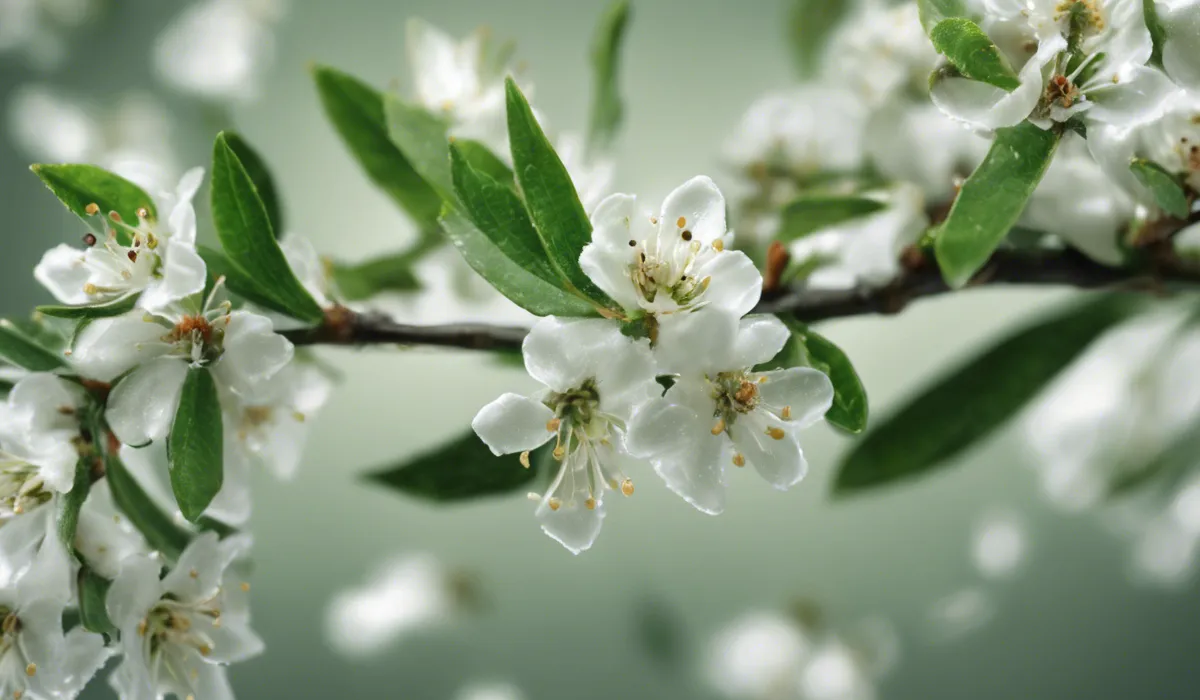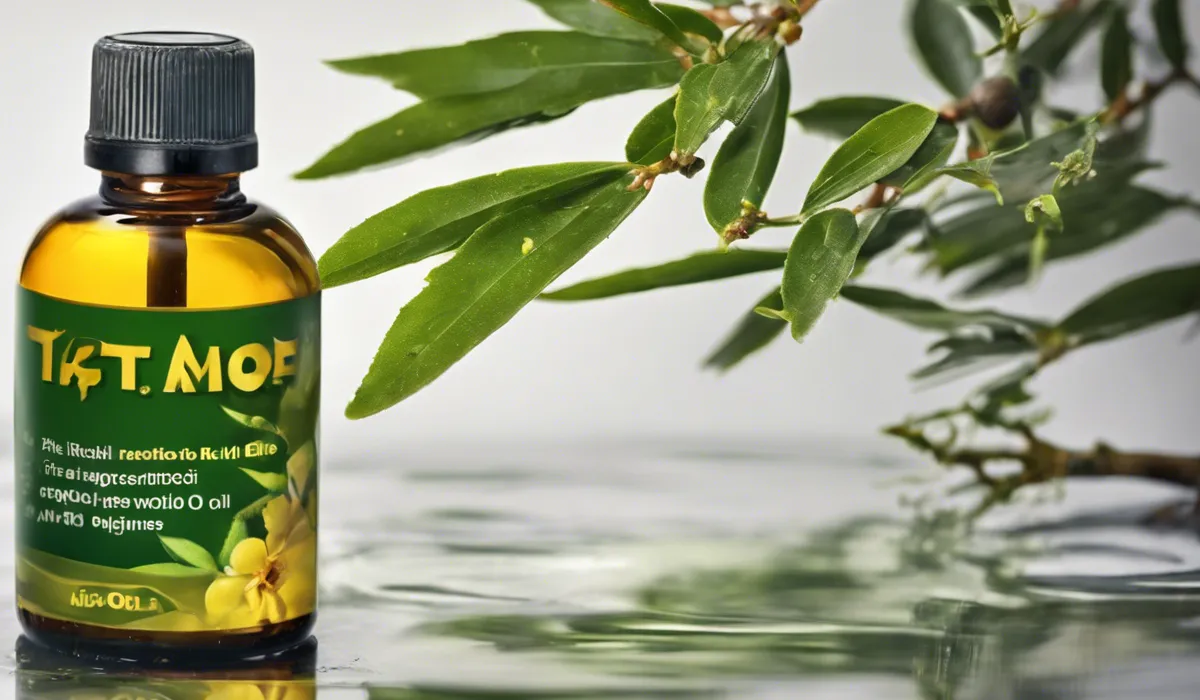Yes, tea tree oil can kill mold. It has antifungal properties that make it effective against mold and mildew. To use, mix a teaspoon of tea tree oil with a cup of water and spray the solution on the affected area. Allow it to dry naturally.
Tea Tree Oil: An Overview and Its Antifungal Properties

Definition and Origin
Tea tree oil, commonly known as melaleuca oil, is an essential oil derived from the leaves of the tea tree, Melaleuca alternifolia.
This tree is native to Australia, specifically the northeast coast of New South Wales. Tea tree oil has been used for centuries by the indigenous Bundjalung people of Australia for its healing properties.
They inhaled the oils from the crushed leaves to treat coughs and colds and applied poultices to heal wounds.
Composition and Active Ingredients
The oil contains numerous compounds, but the most significant is terpinen-4-ol. This component is largely responsible for the oil’s antimicrobial and antifungal effects.
Other compounds present in tea tree oil include γ-terpinene, α-terpinene, 1,8-cineole, α-pinene, and α-terpineol, each contributing to its distinctive properties and scent.
Antifungal and Antimicrobial Effects
Tea tree oil is renowned for its ability to fight fungi and bacteria. Its antifungal properties are so effective that it is often used as a natural remedy for conditions like athlete’s foot, ringworm, and nail fungus.
It can disrupt the cell membranes of fungi, which eventually leads to their death. Moreover, tea tree oil’s antimicrobial properties make it a valuable ally in the fight against bacteria, helping to cleanse and protect the skin.
Comparison With Other Natural Antifungal Agents
When compared to other natural antifungal agents like garlic, oregano oil, and grapefruit seed extract, tea tree oil holds its ground as a potent remedy.
Although each natural agent has its particular strengths and uses, tea tree oil’s broad-spectrum antifungal activity combined with its availability and ease of use makes it a favorite among many looking for natural mold-fighting solutions.
Efficacy of Tea Tree Oil Against Mold

Types of Mold Susceptible to Tea Tree Oil
Tea tree oil is particularly effective against common household molds, such as Aspergillus, Penicillium, and Cladosporium species.
These molds can pose a health risk, especially to individuals with allergies or compromised immune systems, and tea tree oil can be a vital tool in controlling their growth.
Scientific Studies and Evidence
Evidence of tea tree oil’s effectiveness in killing mold comes from various scientific studies. Research has shown that tea tree oil can inhibit the growth of mold spores and even destroy them.
One study found that a solution containing tea tree oil could eradicate most mold colonies within 24 to 48 hours of application.
Disruption of Mold Growth and Spore Production
Tea tree oil works by penetrating the cell wall and disrupting the function of the mold’s cellular machinery.
It interferes with the enzymes vital for energy production and reproduction, leading to the death of mold cells and prevention of spore production.
Limitations and Considerations
While tea tree oil is effective against mold, it is essential to understand its limitations. The oil works best on non-porous surfaces and can be less effective on porous materials, where mold can penetrate deeply.
Furthermore, tea tree oil should be used as a part of a comprehensive mold removal strategy, which includes addressing the underlying moisture issues that contribute to mold growth.
Practical Applications and Safety Guidelines

Preparing Tea Tree Oil Solutions
To use tea tree oil for mold removal, mix one teaspoon of the oil with one cup of water. Put the solution into a spray bottle, shake well, and apply it directly to the moldy area.
Do not rinse the area; instead, allow it to air dry. This will give the tea tree oil time to work on killing the mold spores.
Application Surfaces and Areas
Tea tree oil can be applied to a variety of surfaces where mold tends to grow, such as bathroom walls, kitchen tiles, and window sills. However, it is most effective on non-porous surfaces.
Always test a small area first to ensure that the oil does not damage or discolor the material.
Safety Precautions and Potential Side Effects
When using tea tree oil, it is important to take safety precautions. Use gloves to protect your skin and work in a well-ventilated area to avoid inhaling fumes.
Some people may experience allergic reactions or skin irritation, so if you have sensitive skin, be cautious and consult a healthcare provider if needed.
Maintenance and Prevention Tips
To prevent mold from returning, incorporate tea tree oil into your regular cleaning routine. Use it to wipe down areas prone to moisture, like showers and sinks.
Additionally, keep your home well-ventilated and fix leaks promptly to reduce humidity and deter mold growth.
FAQs About Tea Tree Oil and Mold
Can tea tree oil effectively kill mold?
Yes, tea tree oil can effectively kill mold due to its antifungal properties.
What is the recommended mixture of tea tree oil to water for killing mold?
The recommended mixture is a teaspoon of tea tree oil to a cup of water for treating mold.
How should tea tree oil be applied to moldy areas?
Spray the tea tree oil and water solution directly onto the affected area and allow it to dry naturally.
Does tea tree oil also prevent mold growth?
Tea tree oil’s antifungal properties can help prevent future mold growth when applied to susceptible areas.
Is it safe to use tea tree oil as a mold remover in all areas of the home?
Tea tree oil is generally safe to use on most surfaces, but it’s always a good idea to test a small area first to ensure it doesn’t cause damage or discoloration.
Final Thoughts
Tea tree oil is an effective antifungal agent, capable of killing mold and mildew. Its use is practical for household mold issues—simply mix a teaspoon with a cup of water, spray it on the mold, and let it dry without rinsing.
This natural method offers a potent alternative to chemical mold removers.
